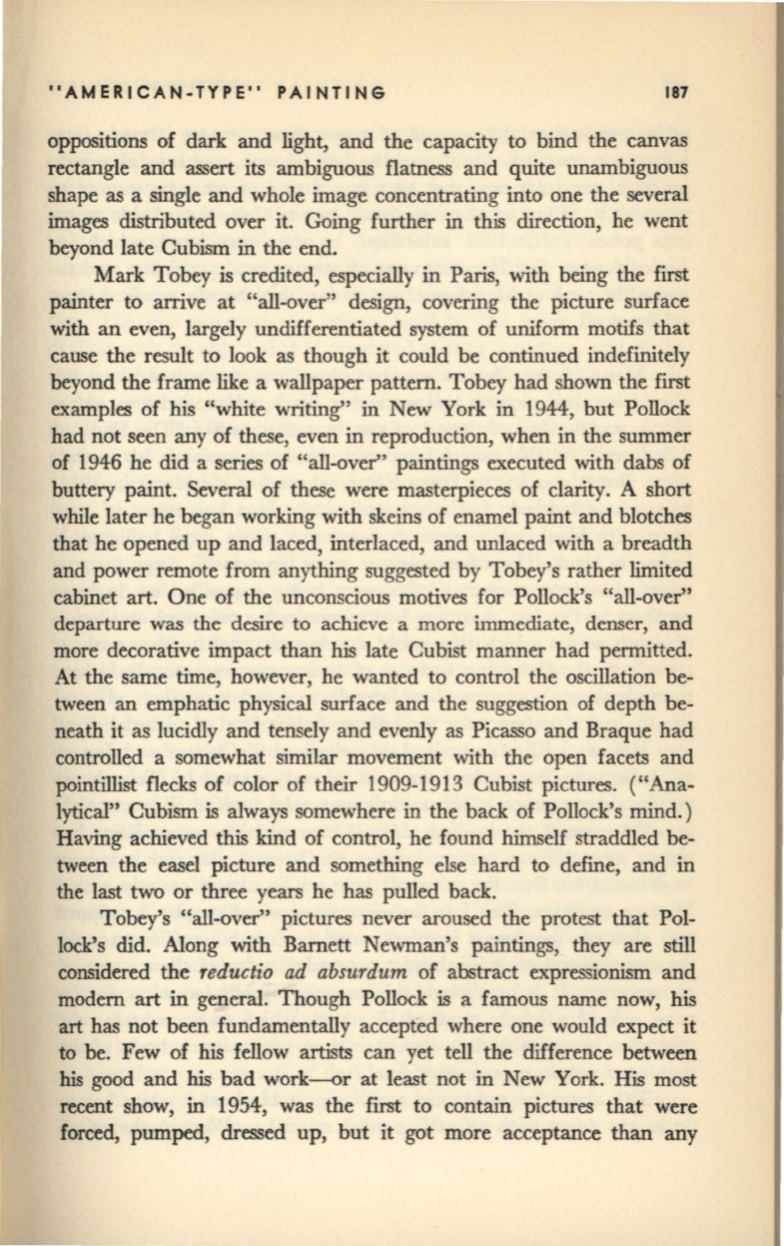
"AMERICAN-TYPE" PAINTING
187
oppositions of dark and light, and the capacity to bind the canvas
rectangle and assert its ambiguous flatness and quite unambiguous
shape as a single and whole image concentrating into one the several
images distributed over it. Going further in this direction, he went
beyond late Cubism in the end.
Mark Tobey is credited, especially in Paris, with being the first
painter to arrive at "all-over" design, covering the picture surface
with an even, largely undifferentiated system of uniform motifs that
cause the result to look as though it could be continued indefinitely
beyond the frame like a wallpaper pattern. Tobey had shown the first
examples of his "white writing" in New York in 1944, but Pollock
had not seen any of these, even in reproduction, when in the summer
of 1946 he did a series of "all-over" paintings executed with dabs of
buttery paint. Several of these were masterpieces of clarity. A short
while later he began working with skeins of enamel paint and blotches
that he opened up and laced, interlaced, and unlaced with a breadth
and power remote from anything suggested by Tobey's rather limited
cabinet art. One of the unconscious motives for Pollock's "all-over"
departure was the desire to achieve a more immediate, denser, and
more decorative impact than his late Cubist manner had permitted.
At the same time, however, he wanted to control the oscillation be–
tween an emphatic physical surface and the suggestion of depth be–
neath it as lucidly and tensely and evenly as Picasso and Braque had
controlled a somewhat similar movement with the open facets and
pointillist flecks of color of their 1909-1913 Cubist pictures. ("Ana–
lytical" Cubism is always somewhere in the back of Pollock's mind.)
Having achieved this kind of control, he found himself straddled be–
tween the easel picture and something else hard to define, and in
the last two or three years he has pulled back.
Tobey's "all-over" pictures never aroused the protest that Pol–
lock's did. Along with Barnett Newman's paintings, they are still
considered the
reductio ad absurdum
of abstract expressionism and
modem art in general. Though Pollock is a famous name now, his
art has not been fundamentally accepted where one would expect it
to be. Few of his fellow artists can yet tell the difference between
his good and his bad work---or at least not in New York. His most
recent show,
in
1954, was the first to contain pictures that were
forced, pumped, dressed up, but it got more acceptance than any


